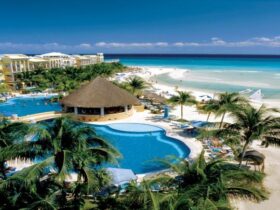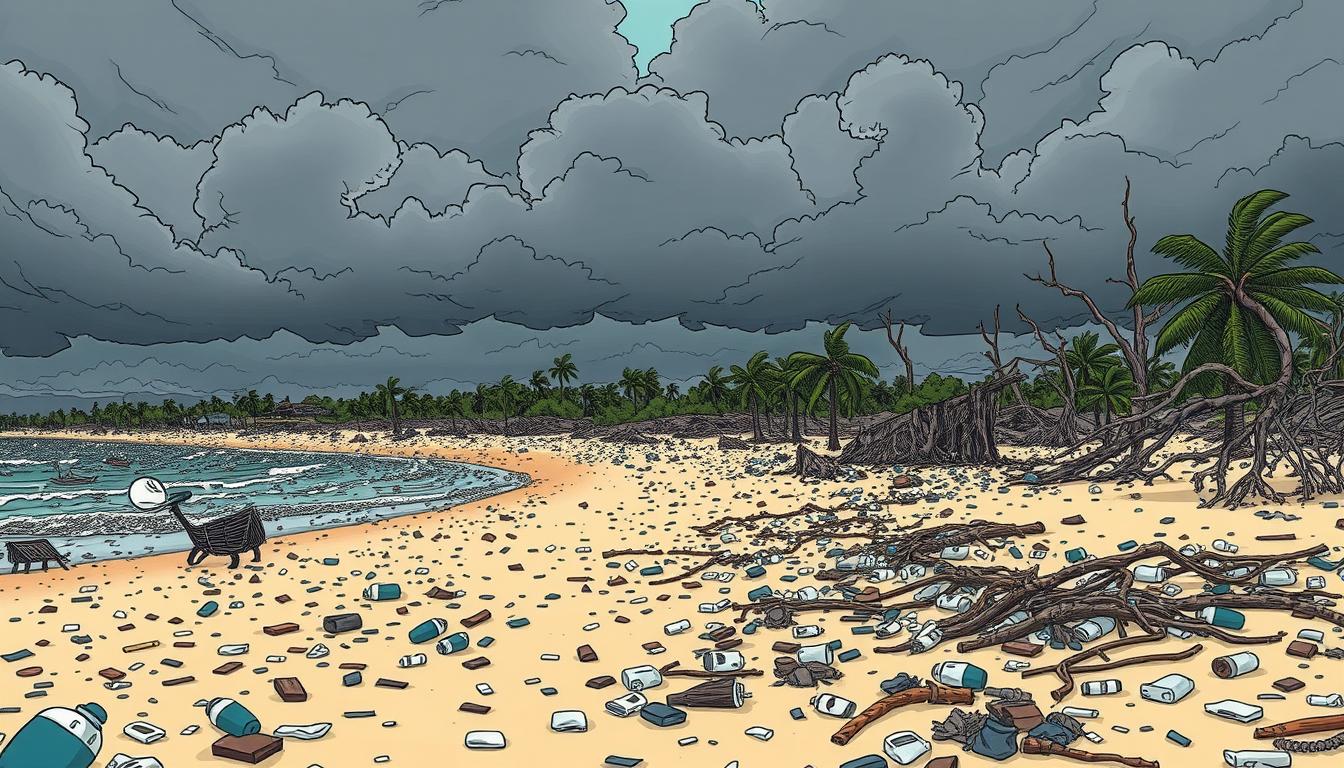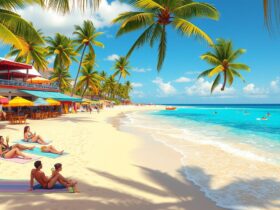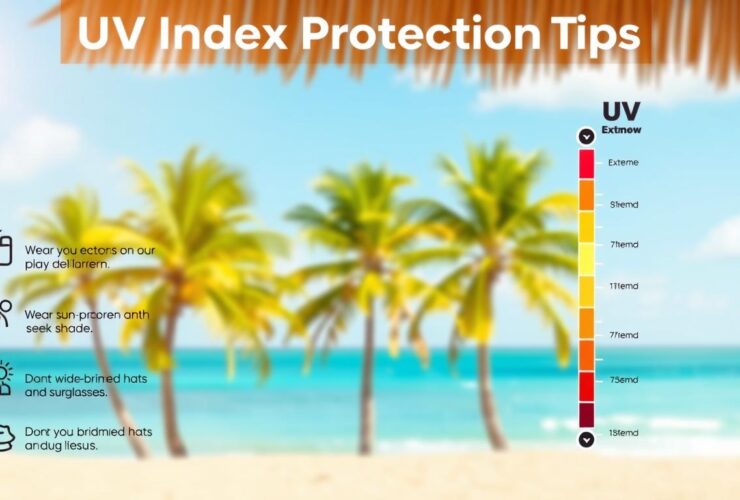Playa del Carmen, a vibrant coastal city in Quintana Roo, Mexico, is experiencing significant changes in its weather patterns due to climate change. Once known for its stable tropical climate, the region is now seeing more frequent and intense weather events. This shift is not only affecting the local environment but also the booming tourism industry and real estate market.
The rapid growth of Playa del Carmen’s tourism sector, with over 10,000 new hotel rooms added in recent years, has brought both economic benefits and environmental challenges. The population has surged by 30% in the last decade, putting additional pressure on local infrastructure and natural resources. This growth is intertwined with the increasing frequency of extreme weather events, making it crucial to understand how these changes are shaping the future of this popular destination.
For both residents and visitors, understanding these changes is essential. Whether you’re investing in high-ROI properties or planning a vacation, the evolving climate plays a significant role. Join us as we explore this critical issue and its implications for Playa del Carmen’s future.
Key Takeaways
- Playa del Carmen is experiencing more frequent and intense weather events due to climate change.
- The city’s rapid tourism growth is straining local infrastructure and natural resources.
- Understanding climate change is crucial for residents, visitors, and investors in Playa del Carmen.
- Extreme weather events are reshaping the region’s environmental and economic landscape.
- Sustainable practices are essential to mitigate the impacts of climate change in the area.
Overview of Climate Change Effects in Playa del Carmen
Playa del Carmen, a vibrant coastal city in Quintana Roo, Mexico, is experiencing significant changes in its weather patterns due to climate change. Once known for its stable tropical climate, the region is now seeing more frequent and intense weather events. This shift is not only affecting the local environment but also the booming tourism industry and real estate market.
The rapid growth of Playa del Carmen’s tourism sector, with over 10,000 new hotel rooms added in recent years, has brought both economic benefits and environmental challenges. The population has surged by 30% in the last decade, putting additional pressure on local infrastructure and natural resources. This growth is intertwined with the increasing frequency of extreme weather events, making it crucial to understand how these changes are shaping the future of this popular destination.
For both residents and visitors, understanding these changes is essential. Whether you’re investing in high-ROI properties or planning a vacation, the evolving climate plays a significant role. Join us as we explore this critical issue and its implications for Playa del Carmen’s future.
Key Takeaways
- Playa del Carmen is experiencing more frequent and intense weather events due to climate change.
- The city’s rapid tourism growth is straining local infrastructure and natural resources.
- Understanding climate change is crucial for residents, visitors, and investors in Playa del Carmen.
- Extreme weather events are reshaping the region’s environmental and economic landscape.
- Sustainable practices are essential to mitigate the impacts of climate change in the area.
Playa del Carmen climate change impact
Our case study reveals significant insights into how climate change is affecting this coastal city. Rising sea levels and shifting weather patterns are key factors driving these changes.
| Year | Development Level | Sea Level Rise (cm) | Population Growth Rate |
|---|---|---|---|
| 2010 | Moderate | 2.1 | 5% |
| 2015 | High | 3.0 | 8% |
| 2020 | Very High | 4.2 | 12% |
These findings show a clear correlation between the city’s rapid development and rising sea levels. The Riviera Maya region, including Playa del Carmen, has seen a 15% increase in extreme weather events over the past decade. For more details on the best Riviera Maya resorts, visit this page.
Yearly trends indicate that without intervention, the city’s infrastructure and ecosystems will face severe challenges. Understanding these changes is crucial for planning sustainable development and mitigating future risks.
Coastal Ecosystem Vulnerabilities and Urbanization Challenges
The coastal ecosystems of this vibrant destination are facing unprecedented threats. Coral reefs, once thriving, now struggle with rising sea temperatures and ocean acidification. Mangroves, essential for coastal protection, are dwindling due to increased flooding and saltwater intrusion.
Coastal dunes are eroding at an alarming rate, weakened by stronger storms and human activity. Aquifers, the lifeblood of freshwater, are contaminated by saltwater intrusion, threatening both residents and wildlife.
Urban Sprawl and Infrastructure Strain
Urban sprawl, driven by the boom in hotel developments, strains local infrastructure. During peak tourist seasons, resources are stretched thin, exacerbating environmental stress.
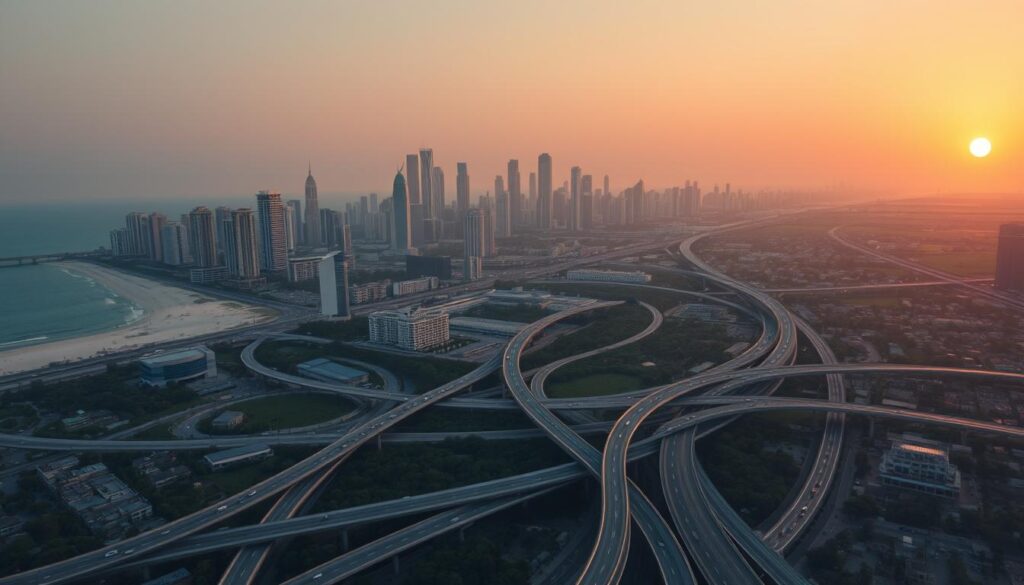
Understanding these challenges is crucial for preserving both ecosystems and tourism. Embracing sustainable practices is essential to mitigate these impacts and ensure a resilient future for this coastal gem.
Hurricanes and Extreme Weather Events
Hurricanes have long shaped the history of this coastal city, but the growing intensity of these storms is raising new concerns. As we explore the historical impact and evolving patterns, it becomes clear that understanding these changes is vital for residents and visitors alike.
Historical Hurricane Damage in the Region
Hurricane Wilma, which struck in 2005, remains a stark reminder of the region’s vulnerability. This Category 3 hurricane caused widespread destruction, with economic losses exceeding $16 billion. The storm’s impact on infrastructure and tourism was devastating, highlighting the delicate balance between growth and resilience.
Evolving Storm Patterns Due to Climate Change
Climate change is altering storm patterns, leading to more intense hurricanes and increased water levels. This shift poses significant risks, particularly for coastal communities. The government and local industry are actively working to rebuild and adapt, ensuring safer conditions for both residents and tourists.
| Year | Hurricane Name | Category | Economic Impact |
|---|---|---|---|
| 2005 | Wilma | 3 | $16 Billion |
| 2020 | Delta | 2 | $10 Billion |
For more information on financing options to secure your property against such events, visit our real estate financing page.
Sea Level Rise in the Mexican Caribbean
The Mexican Caribbean, a region known for its stunning beaches and vibrant ecosystems, is grappling with the realities of rising sea levels. This phenomenon, closely linked to global climate patterns, poses significant challenges for both natural habitats and coastal tourism.
Regional Sea Level Trends and Predictions
Recent studies indicate that sea levels in the Mexican Caribbean are rising at an alarming rate. According to data from satellite altimeters, the region has experienced a steady increase of approximately 3.5 millimeters per year over the past two decades. This trend is expected to accelerate, with projections suggesting a potential rise of up to 30 centimeters by 2050.
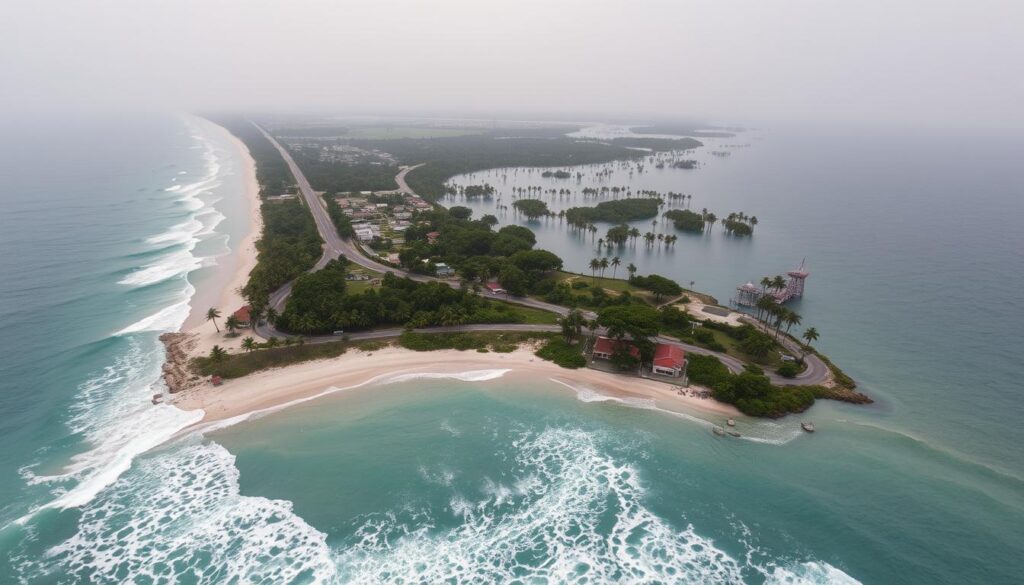
Impacts on Coastal Tourism and Natural Habitats
The implications of rising sea levels are far-reaching. Coastal tourism, a cornerstone of the local economy, faces threats from more frequent flooding and erosion. Natural habitats, including mangroves and coral reefs, are also at risk. These ecosystems, vital for biodiversity, are struggling to adapt to the changing conditions.
Efforts are underway to mitigate these effects. Construction of sea barriers and the implementation of sustainable practices aim to protect both urban areas and natural environments. However, concerted action is essential to ensure the long-term resilience of the region.
Sea Level Rise Implications for Playa del Carmen
Rising sea levels are reshaping the future of coastal cities worldwide, and Playa del Carmen is no exception. Understanding the potential flooding scenarios and their economic implications is crucial for residents, investors, and policymakers alike.
Flooding Scenarios and Economic Impact
Digital elevation models reveal that even a 1-meter rise in sea levels could flood over 30% of the city’s coastal areas. This would not only damage properties but also disrupt local businesses and tourism. The economic impact of such an event could exceed $500 million, affecting thousands of jobs and livelihoods.
A 2-meter rise would inundate nearly 50% of the city, including critical infrastructure like hospitals and schools. The estimated damage could surpass $1 billion, making recovery a long and challenging process.
Digital Elevation Models and Risk Analysis
Digital elevation models provide detailed insights into the city’s topography, helping identify areas most at risk. These models are essential for urban planning and disaster preparedness. By analyzing the data, authorities can prioritize the construction of sea walls and other protective measures.
| Flooding Level (m) | Affected Area (%) | Estimated Damage ($ million) |
|---|---|---|
| 1 | 30 | 500 |
| 2 | 50 | 1000 |
| 3 | 70 | 1500 |
These projections highlight the urgent need for sustainable development and adaptive measures. For more information on how to protect your property, visit our real estate page.
Conclusion
As we conclude our exploration of the challenges facing this coastal city, it’s clear that addressing these issues requires a unified effort. The region faces significant problems, from rising sea levels to more frequent extreme weather events. Collaboration between business leaders, local authority, and the community is essential to create a sustainable space for future generations.
Protecting natural habitats and mitigating rising temperatures are critical steps. By implementing adaptive strategies, we can pave a resilient way forward. Continued research and public engagement will also play vital roles in addressing these challenges effectively.
We invite you to join us in supporting sustainable solutions for this vibrant destination. Together, we can ensure a thriving and resilient future for all who call this special place home.



